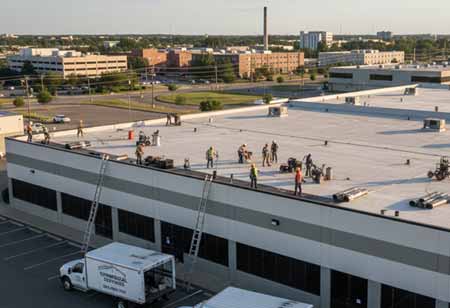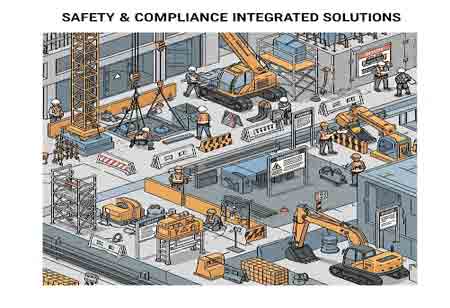Thank you for Subscribing to Construction Business Review Weekly Brief
Specials
- Apartment and Condominium Contractors Canada
- Decking Canada
- Architectural Glass Europe
- MEP APAC
- Construction Saudi Arabia
- German Apartment and Condominium Contractors
- Construction Law APAC
- Outdoor Construction
- Foundation Construction Canada
- MEP Canada
- Kitchen and Bath
- Cold Storage Construction APAC
- Precast Concrete Europe
- Construction Staffing Europe
- Pre-Construction Services
- Flooring System APAC
- Scaffolding Canada
- Swimming Pool Construction Canada
- Construction Management Canada
- Cold Storage Construction Canada
- Flooring Systems Europe
- Residential Construction
- Concrete Canada
- Construction Cladding Europe
- Construction Cladding APAC
- Concretes, Aggregates and Construction Materials APAC
- Concretes, Aggregates and Construction Materials Europe
- Commercial Contractors Europe
- Commercial Contractors APAC
- Dummy
- Construction Insulation, Coating and Waterproofing
- Construction Management APAC
- Landscaping Canada
- Construction Coating Europe
- Construction Tech Startups Europe
- Insulation Services Europe
- Mechanical Contractor Canada
- Mould Remediation and Testing Europe
- Swimming Pool Construction APAC
- Building Sealing Solutions Europe
- Construction Engineering Services
- Mechanical Electrical and Plumbing
- Roofing Systems Europe
- Architectural Glass APAC
- Startups APAC
- Construction Forensic and Owners Representative
- Flooring System
- Waterproofing APAC
- Wall Systems
- Safety and Compliance Europe
- Construction Bidding and Auctions
- Modular and Prefab Construction
- Architectural Glass
- Construction MENA
- Construction Demolition and Recycling Europe
- Modular Construction Europe
- Construction Interiors
- Steel Building APAC
- HVAC
- Doors and windows
- Construction Latam
- Building Information Modeling APAC
- Sustainable Construction APAC
- Building Restoration and Maintenance
- Commercial Contractors
- Specialty Construction
- Construction Engineering Canada
- Construction Engineering MENA
- Modular Construction Canada
- Modular Construction APAC
- Roofing and Siding Systems
- Workforce Management and Staffing
- Roofing Systems APAC
- Construction Consulting
- Steel Building Europe
- Construction Demolition and Recycling APAC
- Safety and Compliance APAC
- Concretes, Aggregates and Construction Materials
- Construction Cladding
The Future of Waterproofing: Science and Engineering Unite
Basement waterproofing is evolving with advanced materials and smart technologies, enhancing structural integrity, sustainability, and resilience while protecting buildings from water-related damage long-term.

By
Construction Business Review | Wednesday, October 29, 2025
Stay ahead of the industry with exclusive feature stories on the top companies, expert insights and the latest news delivered straight to your inbox. Subscribe today.
In construction, the basement is often viewed merely as a functional space, but it plays a crucial role in retaining a building's structural integrity and long-term durability. Preventing water intrusion at this below-ground level is not just a matter of convenience, it is essential. Effective basement waterproofing is a silent defender, safeguarding the foundation against persistent threats such as groundwater, soil moisture, and rainfall. The benefits of proper waterproofing are clear: it contributes to stronger structural performance, improved indoor air quality, reduced material damage, and helps preserve the property's long-term value.
Considerable advancements have marked the evolution of basement waterproofing. What began with rudimentary barriers and basic drainage systems has matured into a sophisticated and integral discipline within the construction industry. Today, it involves a comprehensive approach that leverages advanced materials, innovative application methods, and intelligent system design to create dry, resilient, and healthy subterranean environments. Modern construction practices increasingly recognize that robust basement waterproofing is not an optional enhancement but a critical investment—essential to any contemporary structure's performance, longevity, and sustainability.
Innovations in Waterproofing Agents
The effectiveness of any waterproofing system fundamentally depends on the quality and performance of the materials employed. Continuous innovation in material science is driving the development of more durable, adaptable, and environmentally responsible waterproofing solutions.
Polyurethane and polyurea technologies are leading the field, offering highly flexible, resilient coatings and grouts. Liquid-applied polyurethane membranes are valued for their seamless application and high elongation properties, which allow them to accommodate minor structural movement without rupture. Polyurea coatings provide rapid curing, exceptional chemical resistance, and extreme durability, making them ideal for high-demand environments. Polyurethane grouts are widely used for crack injection, effectively sealing active water ingress.
Cementitious waterproofing systems have evolved significantly beyond traditional mortar. Modern two-component, polymer-modified formulations offer strong adhesion, flexibility, and crack-bridging capabilities. These products can be applied by brush, trowel, or spray, and are suitable for both positive and negative-side waterproofing applications.
Bentonite clay remains a dependable solution, particularly in geosynthetic clay liners (GCLs). These liners, comprising a layer of bentonite clay encapsulated between two geotextiles, swell upon hydration to form a low-permeability barrier—ideal for below-grade horizontal and vertical installations.
Emerging nanotechnologies are also making significant inroads. Nano-coatings, with their superior bonding and penetration characteristics, create ultra-thin hydrophobic or hydrophilic barriers at the molecular level, improving water resistance and durability.
A notable industry trend is the rise of eco-conscious materials. These include products with high recycled content, low-VOC (volatile organic compound) compositions to enhance indoor air quality, and bio-based agents derived from renewable resources.
Technological Integration: The Rise of Intelligent Waterproofing
Technology is transforming the way basement waterproofing systems are monitored and managed. Smart moisture detection sensors warn early about potential leaks or elevated humidity levels, allowing for timely intervention. These sensors, leveraging IoT (Internet of Things) connectivity, transmit real-time data to smartphones or building management systems, enabling remote monitoring and proactive response.
Artificial intelligence (AI) is increasingly being applied to analyze sensor data, predict issues, and automate responses, such as activating dehumidifiers or adjusting drainage systems. High-resolution imaging and non-destructive testing techniques also enhance diagnostic capabilities, enabling precise assessments of existing systems without invasive procedures. Moreover, robotics and automation are being explored to apply waterproofing materials, particularly in large-scale or complex installations, to improve accuracy, consistency, and efficiency.
The construction industry recognizes that basement waterproofing must be integrated from the earliest design phases. Architects and engineers collaborate with waterproofing specialists to develop systems tailored to specific site conditions, building uses, and hydrostatic pressures.
Effective coordination between waterproofing professionals and other trades is essential to safeguard installed systems and ensure proper detailing at transition points. The quality of installation is critical; thus, there is increasing reliance on certified applicators trained in manufacturer-recommended techniques. Comprehensive quality assurance and control protocols are becoming standard to ensure long-term system performance.
Guided by Standards and Sustainability
Evolving codes and standards govern basement waterproofing practices. For instance, in the UK, the NHBC Standards outline protection levels—Type A (barrier), Type B (structurally integral), and Type C (drained protection)—each suited to specific project requirements. Such standards are essential for ensuring structural integrity, occupant safety, and regulatory compliance.
Beyond compliance, there is a growing emphasis on longevity and resilience. Waterproofing systems are selected for immediate effectiveness and contribution to a building’s long-term performance and sustainability.
Sustainable practices, including selecting low-impact materials, resource-efficient applications, and lifecycle-based product evaluations, are gaining traction. Effective waterproofing supports green building initiatives by improving energy efficiency, reducing material degradation, and enhancing indoor environmental quality. Some systems are also integrated with broader water management strategies, such as rainwater harvesting.
The waterproofing sector continues to advance through innovation and technology integration. Future developments point toward intelligent systems that are predictive, self-regulating, and integrated within broader smart building ecosystems.
Material science is expected to deliver next-generation solutions with enhanced self-healing capabilities, greater environmental adaptability, and extended service lives. Prefabricated and modular components may streamline installation processes and improve quality control. Data-driven design, informed by real-time performance monitoring, will become instrumental in preventive maintenance planning and system optimization.
Basement waterproofing is experiencing a period of growth and technological advancement. Informed by more profound insights into building science and enabled by cutting-edge materials and smart technologies, the industry is better positioned than ever to protect structures from water-related damage. Through continuous innovation and a commitment to sustainability, modern waterproofing solutions are helping to create drier, healthier, and more resilient buildings, laying a solid foundation for long-term progress.
More in News





